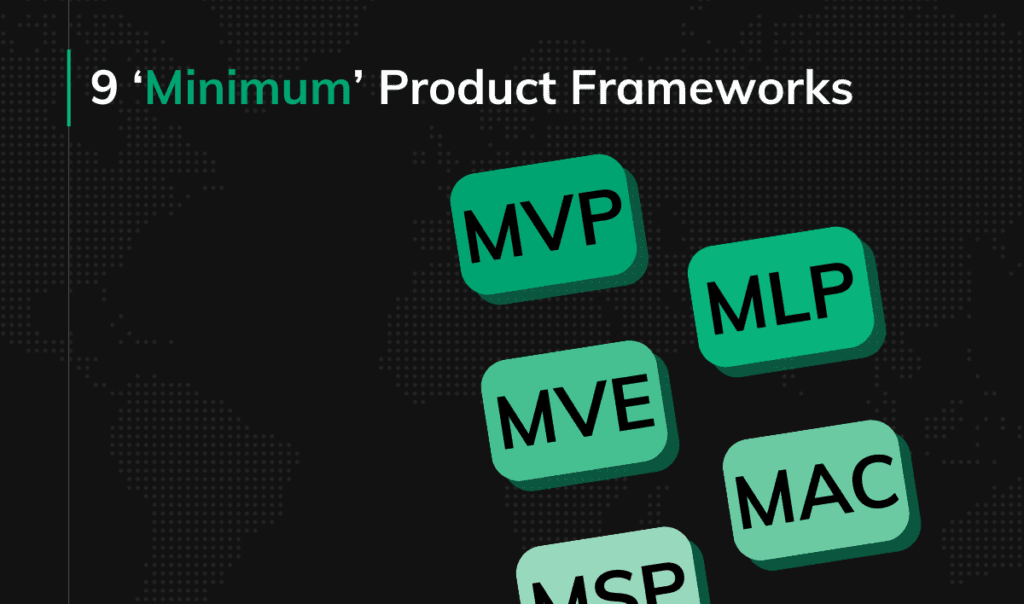12 software outsourcing challenges and how to overcome them. A developer’s point of view
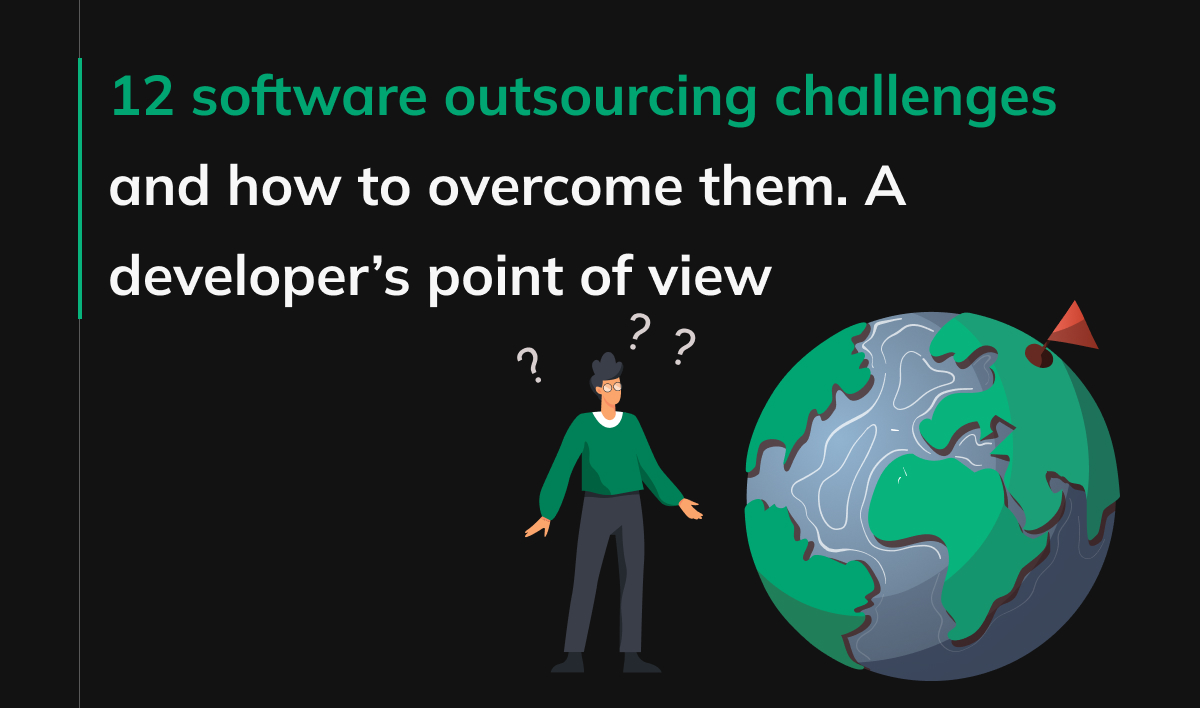
Outsourcing software development can be a great way to get your product to market faster and with less cost. But it can also be a big challenge, especially if you need to become more familiar with the process.
Having worked as a software developer on many startup projects with clients worldwide, I’ve noticed a set of problems founders need to tackle when outsourcing software development. My team and I’ve developed strategies and solutions to help founders enhance their software development process. In this blog post, I’ll
- take a look at some of the challenges of outsourcing software development,
- provide examples of these problems,
- explain how my team and I managed to overcome them.
This is an article for startup founders who are to have their product developed but don’t have the right development yet. It will give you a better understanding of what to expect when outsourcing software development and how to avoid common pitfalls. Thanks for reading!
Challenges startup founders face when outsourcing software development. Quick overview
Before we dive into the details of software development outsourcing, let’s take a helicopter view of the issue.
These are the most common problems connected with outsourcing software development I’ve witnessed:
- Poor communication;
- Founders don’t know if they can trust their outsourcing partners;
- They are not sure if their outsourcing partner is trustworthy enough to deal with user data (critical, for example, in the digital health industry or FinTech);
- Clients are not sure if the development team provides value;
- If working with an offshore team, startuppers are afraid of the potential language barriers and cultural differences;
- Founders see the threat of working in different time zones;
- Startups might suffer from poor decision-making processes or lack of leadership, which transfers to software development projects;
- Both client and their outsourcing partner might have different delivery expectations;
- Startup founders ignore the company culture of their software development team;
- Cutting costs and/or poor budget management structure;
- Problems resulting from cooperating with multiple outsourcing partners (i.e. uneven code quality);
- Project delays.
Now that we have a general overview of the problem, let’s take a closer look at each of these challenges and discuss how you can deal with them.
CHALLENGE 1. Communication in software outsourcing
Among the twelve software outsourcing challenges I named, communication and trust are by no means the most important ones. I know it sounds prosaic, but it’s true. Most, if not all, of the common software outsourcing challenges I mention here go back to points #1 and #2—poor communication results in a lack of understanding. A lack of transparency causes a lack of trust.
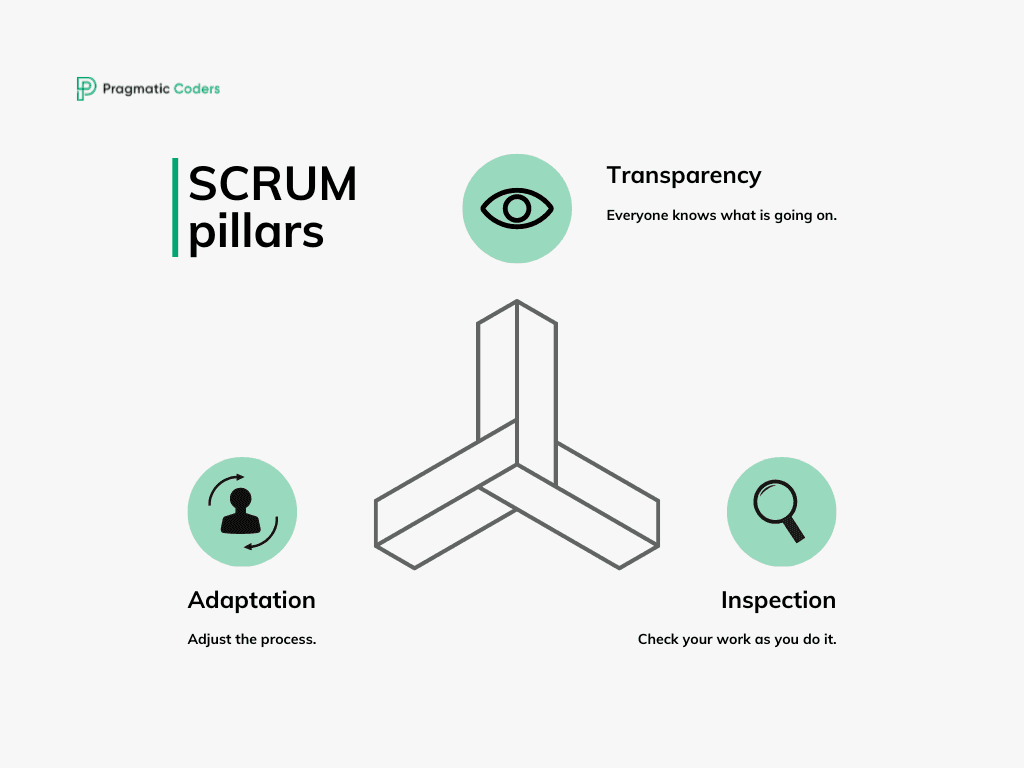
Solution
- The best way to avoid communication problems is to ensure transparency and honesty.
Embracing the SCRUM method by both the client and their outsourcing partner can help, as one of SCRUM’s core values is openness, and one of its pillars is inspection. Here it’s important to mention that you should inspect the project’s progress AND the people working on it. In the end, how can they adapt (adaptation is SCRUM’s second pillar) if they don’t know what they are doing wrong? If you implement all three pillars in your work (the third being transparency, which can be understood as the willingness to give and receive feedback), you can be sure you will have fewer problems to deal with. - The approach we took to enhance communication with our clients was to carry out daily meetings during which our Product Owner updated them on the progress we made in terms of business objectives. It’s also a good practice if a founder participates in other (ideally: all) SCRUM events because it lets them completely understand what’s happening inside their outsourced team.
- You will communicate mainly online with your offshore team. However, communication jumps to a new level when everyone meets in person. I know it might be difficult, costly, and time-consuming, but I suggest you organize live meetings with your outsourcing partner as early and frequently as possible.
- It is worthwhile to extend communication to the recipients of the software (in my case, physicians). Everyone on the project should be able to talk with users, ask them questions and listen to what they have to say. The role of the people responsible for keeping in touch with end users should be to bridge the gap between them, Product Owners, developers, and anyone else involved in building your startup.
- Find an outsourcing company that’s eager to share its knowledge and educate everyone they work with. Thanks to that, the chance there’s a knowledge gap will be much smaller.
- It’s best when the development team knows what the work is like at the client’s site (e.g., their duties, responsibilities, or the tools they use) – then it’s easier to understand their decisions and motivations.
- Communication should flow through public channels. Keep private messages to a minimum (except for sensitive issues).
From our experience: When we collaborated with a game development team for one of our clients, communication was key to our success. Weekly syncs and open chats helped us adapt to constant changes. We bridged gaps by understanding each other’s workflows and limitations. This feedback loop made the integration smoother and improved the final product.
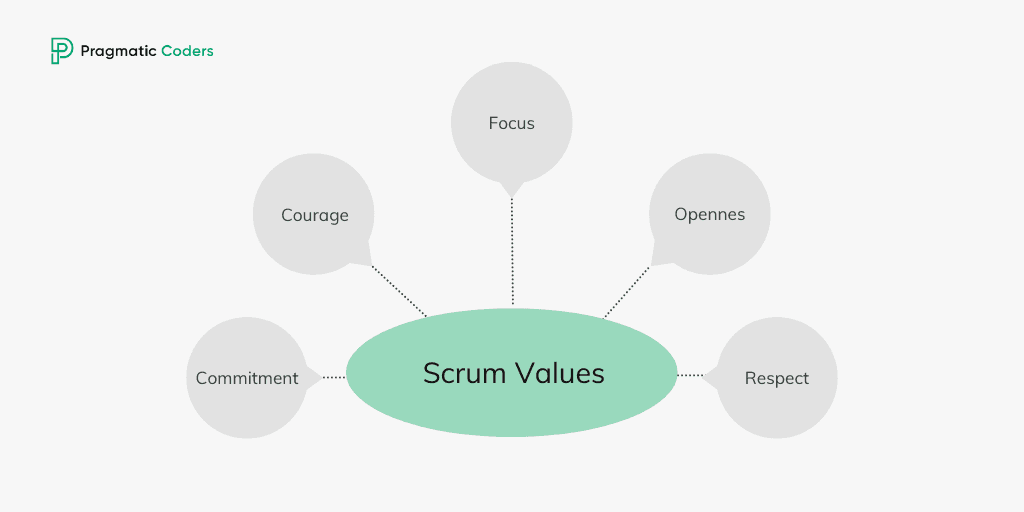
CHALLENGE 2. Trust in software outsourcing
Outsourcing software development problem #2 is trust. Every startup founder wants to ensure they can rely on the outsourcing company they’ve hired. However, building trust takes a lot of effort and, usually, quite some time. How can you make sure you can believe the software developers you’re working with?
Solution
- Research outsourcing companies. When evaluating potential vendors, make sure you understand their process and know how they intend to ensure the highest quality and value of software development. Spend time reading past customer reviews and testimonials and looking for case studies demonstrating their successes.
- Once you’ve hired a remote team and need to ensure they are trustworthy, here are two things you may want to check off.
- The outsourcing team aspires to be your partner – they don’t just want to take your money, write the code, and say “bye.” If people on the team are proactive and suggest how to make the development process more effective, that’s a good sign.
- The team follows the Agile methodology and works in SCRUM – because if they do it for real, they will, among other things, run a product backlog you can access at any time and have real-time insight into the development process. Real SCRUM reduces the feeling of uncertainty and helps to understand the causes of problems (which always occur), so it’s worth checking if your outsourcing partner uses this methodology.
- It is worth remembering that a good software partner will try to build trust from the very beginning of the collaboration and reinforce it before the development process starts.
- You should be in constant contact with the team, checking if the product is meeting your vision and if your team is moving in the right direction with each increment.
- There are metrics that will confirm whether you are achieving your goals, such as the number of questions that arise during meetings, satisfaction with working with the team (it’s worthwhile for the customer to be transparent about the quality of the collaboration), the impact of implemented actions (monitoring whether the process is improving), or burndown charts of delivered story points.
- If possible, gather feedback from all stakeholders to see how they feel about your outsourcing partner.
CHALLENGE 3. Personal or vital data
Anyone working on a software development project will sooner or later be dealing with customers’ data. You need to secure the information because data leakage is the last thing you want to see. How can you ensure your outsourced partner knows how to deal with it?
Solution
- Sign a dual agreement. When it comes to personal and vital data, the most important thing is to have a solid contractual agreement detailing how this data should be handled.
- Be aware of all the data security standards in your industry and country so that you can guide your outsourced team through them. Developers’ job is to create software, so don’t expect them to know all the regulations your product must comply with. That was the problem I once faced. The client didn’t inform us immediately that we should work according to the HL 7 FHIR standard. And when they did, eventually, it turned out we wasted time working in vain because the code we had written not knowing about the standard was useless.
- Check if your outsourced team has data certification. For example, in the digital health industry, that’s HIPAA Compliance.
HIPAA compliance is a set of standards and regulations set forth by the Health Insurance Portability and Accountability Act (HIPAA) of 1996. This law was established to protect individuals’ health information privacy and provide guidelines for the secure storage and transmission of health data.
My team obtained the certification, which ultimately made us more reliable to our clients. Find the standards or certificates specific to your industry and look for them when researching the software development services of your potential partners. - Ensure your Product Owner knows the ins and outs of your industry and law regulations in your country. A good PO takes care of your software product AND the business side of it.
- Startups are usually tight on budget, but if you have the money, you can hire external controllers and educate your development team. These are both practices I witnessed in one of my projects.
- The client had people survey us repeatedly and ask how we developed the software. And when I say “survey,” I don’t mean a 2-questions Google form. Those were extensive lists of questions regarding the software development process and project completion. We had to show we stick to the HIPAA standards, and our DevOps had to explain the project infrastructure is safe and that no unwanted person can access it. We were able to pass all these “tests,” which also made the client trust us more.
- The company we worked for had patient data in-service training. A cool thing they did was give the same training to us. This enhanced our work with patient information because we better understood healthcare regulations and laws.
CHALLENGE 4. Providing value in software outsourcing
The next challenge that comes with software development projects is ensuring the dedicated team actually does their job, provides business value, and writes mistake-free code. How do you do this?
Solution
Here, again, SCRUM arrives to help. I know I might sound repetitive, but if your software development partner works in SCRUM, you can be sure they comply with some standards, such as Acceptance Criteria, Definition of Ready, and Definition of Done. Also, remember it’s your Product Owner that takes care of your product, and if you have any questions or doubts, they’re the person to answer them.
- Acceptance Criteria (AC) are a set of conditions that must be met in order for a product increment to be accepted by the customer or client. It is an “agreement” between the development team and the customer/client on what should be included in the final product. The criteria can vary depending on what kind of product is being developed but typically includes features, functionality, performance standards, or quality measures. You should really take care of the AC and update them whenever anything changes in your project. It’s best if Acceptance Criteria are defined by a founder. If that’s impossible, you should at least accept them before the software development process starts.
- Definition of Ready (DoR) is a set of rules that should be met before a product can begin development. This includes ensuring the team has all the necessary resources and is fully prepared to start working on the project. DoR also helps ensure that any issues have been addressed and clarified prior to starting development.
- Definition of Done (DoD) is a set of criteria that must be met before the work can be considered complete. This includes ensuring the product meets customer/client expectations and has been tested for quality assurance. DoD also helps ensure all documentation is up to date, any issues have been addressed, and the product is ready for deployment. All of these criteria must be met before the project is considered complete. DoR and DoD should be established at the beginning of your cooperation with a software partner.
Of course, you can implement any other set of criteria to your software development project. You just need to ensure the rules are clear and you know how to check if they are met.
CHALLENGE 5. Language barriers and cultural differences
Language can create a barrier to communication, leading to misunderstandings or misinterpretations, which could cause delays in the completion of tasks. Culture also plays a role; different backgrounds lead to different ways of thinking.
Solution
Language and cultural problems are probably one of the first things that come to your mind when you hear “software outsourcing challenges.” However, from my experience, that actually isn’t a problem! Of course, my knowledge is limited to my experience, but my team has never had to deal with linguistic misunderstandings. When it comes to culture, I think Poland share’s the general mentality of the western world, so this was never an issue in our work.
Tip: for language insights, check EF’s The world’s largest ranking of countries and regions by English skills.
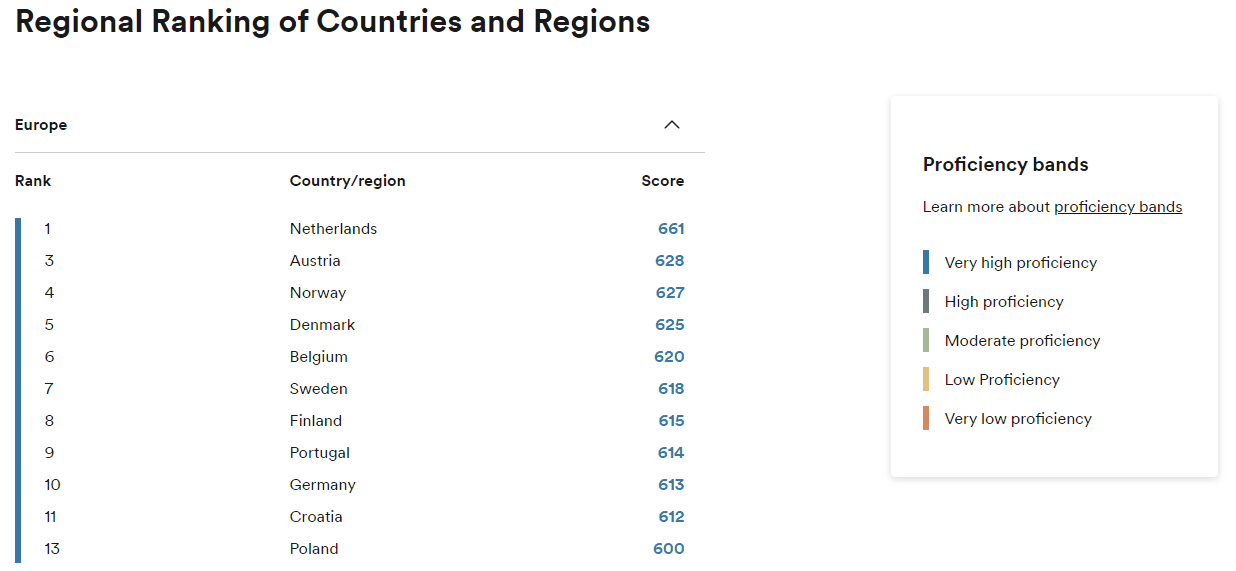 Source: ef.com
Source: ef.com
CHALLENGE 6. Time zones
When you have people working across different time zones, there is always the fear that your project will suffer due to miscommunication or lack of coordination between the various parties involved.
 Source: worldtimebuddy.com
Source: worldtimebuddy.com
Solution
- Asynchronous work – luckily, coding doesn’t involve a lot of meetings or collaboration, so your outsourced team can code during their working hours. Nevertheless, cross-team meetings happen, and then making a lot of notes and recording them is a must to ensure everyone is on the same page. In one of my past projects, the client’s in-house developers didn’t attend my team’s backlog refinement meetings. It made their work less effective and their sprint capacity estimations irrational.
- Suppose there are any discrepancies between what your in-house and external teams know. In that case, you need to establish one “source of truth” (usually it’s Jira or any other project tracking software) they can turn to and resolve their doubts. One more tip: remember to determine when you want to receive new versions of your product software (for example, at 9-10 am in your time zone).
- Development team’s flexibility – it’s good to come to a general agreement on how flexible your offshore team is going to be. Developers can write code during their working hours, but some things must be decided during live meetings. Then it’s good if your team is eager to change their work time and adjust to you. That’s how we worked with our clients, and it had the desired effects.
CHALLENGE 7. Decision-making and leadership
When people you’re working with live in other parts of the world and your team is so scattered, the decision-making process can suffer, and it’s way harder to manage both your internal team and the outsourced partner. You need to avoid the situation when some of the people working for you don’t understand the decisions that are being made and don’t know who they can turn to if they encounter a problem.
Solution
- You need a person (it can be you or, for example, a Product Owner) who will stay on their toes and be a bride between your in-house team and outsourced teams. Such a person:
- takes care of product management;
- understands the product;
- understands and communicates the needs of the offshore developers to the management and vice versa;
- doesn’t just carry out orders but analyzes the situation and proposes solutions;
- isn’t afraid to make decisions and keeps in close contact with those responsible for your business strategy.
- Reduce the distance between the dedicated team and your startup’s management. The fewer barriers there are between these two groups, the easier it will be for everyone to be on the same page. Live meetings really do the work here. We’ve managed to resolve a lot of problems we’ve never even thought existed thanks to clients’ visits to our office and having a straight talk with a cup of coffee.
CHALLENGE 8. Delivery expectations
Startup founders often have unclear delivery expectations, which can lead to disappointment and frustration for both the founder and their team. Without a clear understanding of what needs to be done and when it needs to be completed, there is no way for either party to adequately plan or prepare for the successful completion of tasks.
Solution
- Communication. Startups often change their product vision and pivot, and that’s okay. However, you must inform the people you work with as soon as possible about all of these changes. Working without a long-term goal can result in generating waste and missing deadlines.
- Communication (again). I once worked on an outsourced project where the client didn’t really tell us about the business domain standards I should hold to. I had to figure them out on my own, and I did, but it would be much better for the entire project if I knew exactly what was expected of me.
CHALLENGE 9. Company culture
The charm of outsourcing development projects is that you’ll have to confront a way of work and behavior that might be absolutely different from what you’re used to and the other way around. This might lead to misunderstandings.
Solution
From my experience, what really helps is when the client tries to understand the culture of the software development company they’re working with. You don’t have to be into Agile and SCRUM or any other methodology the development team you’ve hired follows but try to understand their way of working.
Once we’ve proven we can partner with our clients, they were open to letting us choose the technology we worked with and how to achieve goals. It made our cooperation more fruitful.
CHALLENGE 10. Budget
It’s obvious you want to spend as little money as possible when building your startup product. And as I said before, working with people scattered all over the world is not easy. It might make it harder to control the project management and your budget.
Solution
- Don’t focus on too many things at one time. Having to deal with different time zones is a challenge on its own; you don’t have to complicate it by working on extra projects/products within your main project/product. Dedicated teams at Pragmatic Coders develop software AND help with the business side of their client’s projects, for example, by defining their MVP scope (so that you don’t spend time and money on things that could be taken care of later).
- Use the help of your dedicated team. This point isn’t that obvious, but once the outsourcing partner manages to gain your trust and your relationship is built on partnership, you might want to ask them for their opinion. In the end, these people know your product inside out, so they might see some cost-cutting possibilities you would’ve never thought of.
- Stick to one software development company or, if collaborating with many, ensure they have the same standards (more on it below).
CHALLENGE 11. Multiple outsourcing companies
Outsourcing development to different companies is a popular practice. Some companies can be cheaper or excel at a technology you need. But how can you be sure each provider will work equally well?
Solution
- Choose one standard and have all your partners follow it. Below I’ll give you an example of how such a standard can look (this is how we work at Pragmatic Coders).
- A developer writes code and tests (1) it based on Acceptance Criteria and task description.
- Another developer tests (2) if the code works and meets the business criteria.
- Once the code is reviewed, it’s handed over to the Product Owner, who tests (3) it again.
- Optionally, once the Product Owner reviews the feature, it is handed over to the client, who tests (4) it again.
- If the client has no objections, the code is approved for production.

As you can see, the code is tested up to four times before it’s finally approved. Thanks to that, the client can be sure there will be no or fewer bugs in his product.
- When hiring multiple software development partners, make sure they all follow the same criteria and can provide valuable solutions. You want to avoid a situation in which one provider creates poor-quality code that needs to be rewritten by other teams.
- What’s more, all software providers must have access to the same information and share the same product vision. A situation when developers argue about the product because each of them has a different understanding of how it should work is unacceptable. Similarly, you can’t allow a case when one provider asks the other how to do something (this is an ideal recipe for a tense atmosphere in your project).Now imagine there are no standards, and each of your outsourcing partners works however they want. You decide to end the cooperation with one of them, and what happens? The other developers need to take care of the code. And if there’s something wrong with it and the code needs to be changed, they waste extra time trying to understand it instead of just working with it.
- You should protect yourself in case of personnel changes. Create implementation materials that will minimize the impression of reduced quality when onboarding new developer teams to your project.
- One more question you might be asking yourself is: Should I hire one provider whose developers know many programming languages and integration technologies or ten providers with developers specializing in one area?
My answer will be similar to what I said before: the more things (people) you have to deal with at once, the bigger the possibility something will go wrong. I’m a big fan of option #1.
CHALLENGE 12. Project delays
Project delays are inevitable. The startup world is too unpredictable and dynamic to say how long a project will take precisely. Even seasoned Product Owners can make mistakes with their estimates. Since delays are unavoidable, ensure your offshore developers are honest with you and communicate such situations whenever they happen.
A few key things you should remember:
- If your remote team doesn’t have testers, the developers will have to test the code on their own, meaning the whole development process will take longer;
- Estimating how long a functionality will take to develop is your developers’ responsibility;
- Reducing technical debt takes time but will benefit you in the long run. Technical debt is the cost of rework caused by choosing an easy solution now rather than using a better approach that may take more time and effort. Developers can deliver new features faster by sacrificing the code value. However, they will have to address the problem of low-value code in the future anyway. Additionally, it will take more time and money because the debt that needs to be reduced will grow bigger. Take this factor into consideration.
- You need your expectations to be realistic. If there’s a management board in your startup and you promised them that a feature that takes two months to develop would be delivered in one month, that’s not a project delay; that’s a wrong estimation.
Software outsourcing challenges. Summary
Software development projects often involve working with external partners, which can bring many challenges. I hope this article will help you overcome all of them.
Choosing the right outsourcing model can significantly impact the success of your project. For a comprehensive comparison between nearshore and offshore software development outsourcing, explore our detailed guide. This can help you make informed decisions and avoid common pitfalls in your software development journey.







